DIY Knitting for Cozy Home Decor
Are you ready to dive into the delightful world of DIY knitting? If you’re looking to add a personal touch to your living space, there’s nothing quite like the warmth and charm that comes from handmade decor. Imagine snuggling up under a cozy knitted blanket while sipping hot cocoa or adorning your couch with vibrant, textured pillows that you crafted yourself. Knitting is not just a hobby; it’s a way to express your creativity and transform your home into a sanctuary of comfort.
In this article, we’ll explore various techniques, patterns, and tips that will help you enhance your living space with beautiful knitted items. From understanding the essential supplies to mastering basic knitting techniques, we’ll guide you every step of the way. Whether you’re a seasoned pro or a complete beginner, there’s something here for everyone. So grab your yarn and needles, and let’s embark on this cozy journey together!
Knitting is more than just a craft; it’s a meditative practice that allows you to unwind while creating something unique. Think of it as a form of therapy where each stitch brings you closer to a finished piece that reflects your style. Plus, the satisfaction of completing a project is unmatched! With the right techniques and patterns, you can create stunning home decor that not only looks good but feels good too.
Throughout this article, we will cover a variety of projects that can easily fit into your home decor. From knitted blankets that add warmth to your living room to decorative pillows that bring a pop of color to your bedroom, the possibilities are endless. We’ll also share tips on selecting the right yarn, mastering essential stitches, and finishing your projects with flair. So, are you ready to turn your home into a cozy haven with the art of knitting? Let’s get started!
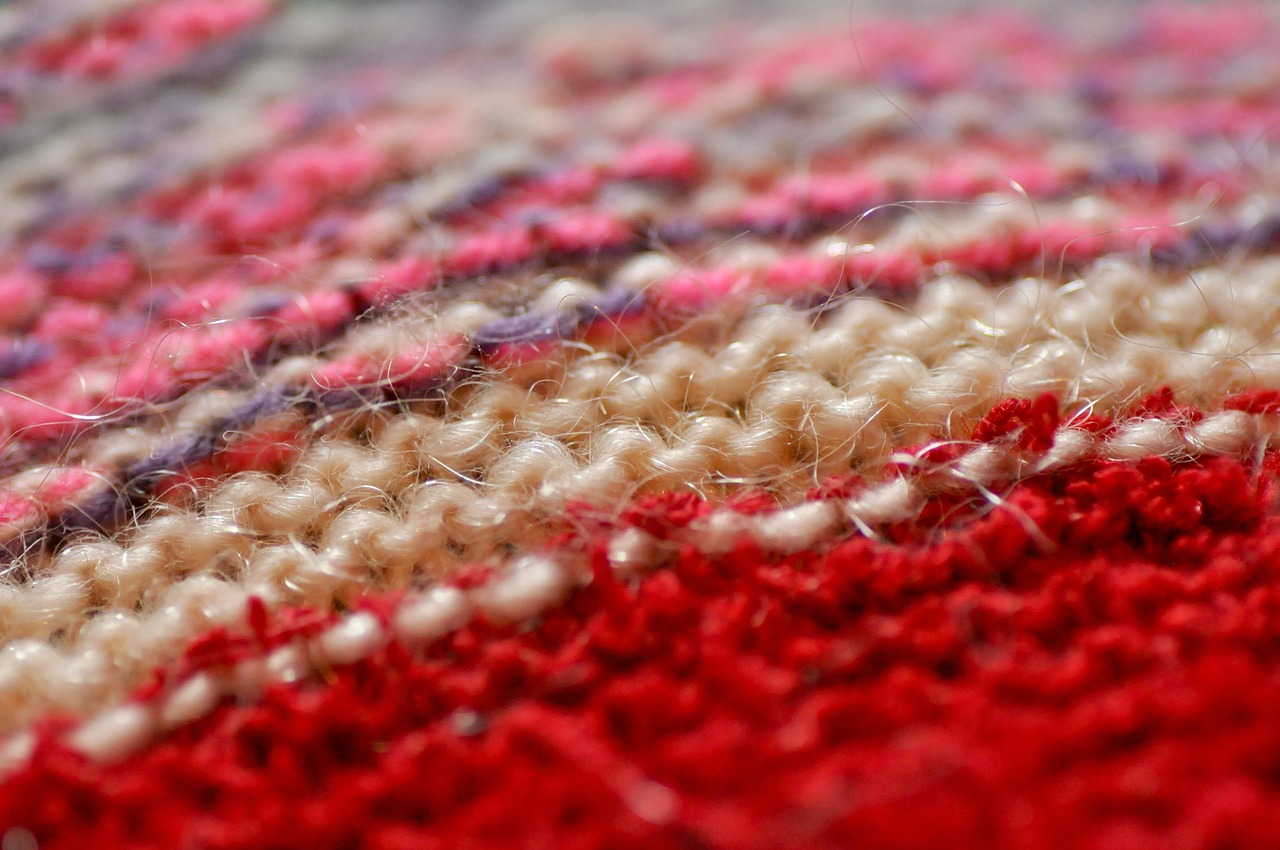
Essential Knitting Supplies
Before diving into the delightful world of DIY knitting, it's crucial to gather the right tools and materials. Think of your knitting supplies as the ingredients for a delicious recipe; without them, you won't be able to whip up those cozy creations that will transform your home. So, let’s explore the essential knitting supplies that every aspiring knitter should have in their toolkit.
First and foremost, you'll need knitting needles. These come in various sizes and materials, including bamboo, metal, and plastic. The size of the needle affects the tension of your stitches, so it’s important to choose the right one based on your yarn weight. For beginners, a medium-sized needle, like a US size 8 (5mm), is often a good starting point. You can also opt for circular needles, which are great for larger projects like blankets and allow for more versatility.
Next up is yarn. This is where the magic happens! Yarn comes in a plethora of colors, textures, and weights, which can significantly influence the look and feel of your finished project. For cozy home decor items, consider using chunky yarn or worsted weight yarn for that extra warmth and comfort. Don’t forget to check the yarn label for care instructions and recommended needle sizes!
In addition to needles and yarn, you’ll find that having a tapestry needle is essential for weaving in those pesky ends once you’ve completed your project. It’s like the icing on the cake—necessary for a polished finish. Another handy tool is a measuring tape, which helps ensure your pieces are the right size. A stitch marker can also be a lifesaver, especially if you're working on intricate patterns or need to keep track of your stitches.
To keep everything organized, consider investing in a project bag. This not only keeps your supplies in one place but also makes it easy to take your knitting on the go. Imagine sitting in a cozy café, sipping coffee, and working on your latest project—all thanks to your trusty project bag!
Finally, let’s not forget about pattern books or online resources. Whether you prefer flipping through the pages of a beautifully illustrated book or scrolling through endless patterns on your device, having access to a variety of designs can spark your creativity and keep you inspired. Remember, the world of knitting is vast, and there’s always something new to learn!
Here’s a quick overview of essential knitting supplies:
| Item | Description |
|---|---|
| Knitting Needles | Available in various sizes and materials; essential for creating your projects. |
| Yarn | The main material you'll work with, available in many colors and textures. |
| Tapestry Needle | Used for weaving in ends and finishing your projects. |
| Measuring Tape | Helps ensure your pieces are the correct size. |
| Stitch Markers | Useful for keeping track of stitches and patterns. |
| Project Bag | Keeps your supplies organized and portable. |
| Pattern Books/Online Resources | Provides inspiration and instructions for your knitting projects. |
In conclusion, having the right knitting supplies is the first step toward creating beautiful, cozy home decor items. By investing in quality materials and tools, you set yourself up for a successful and enjoyable knitting experience. So, gather your supplies and get ready to unleash your creativity!
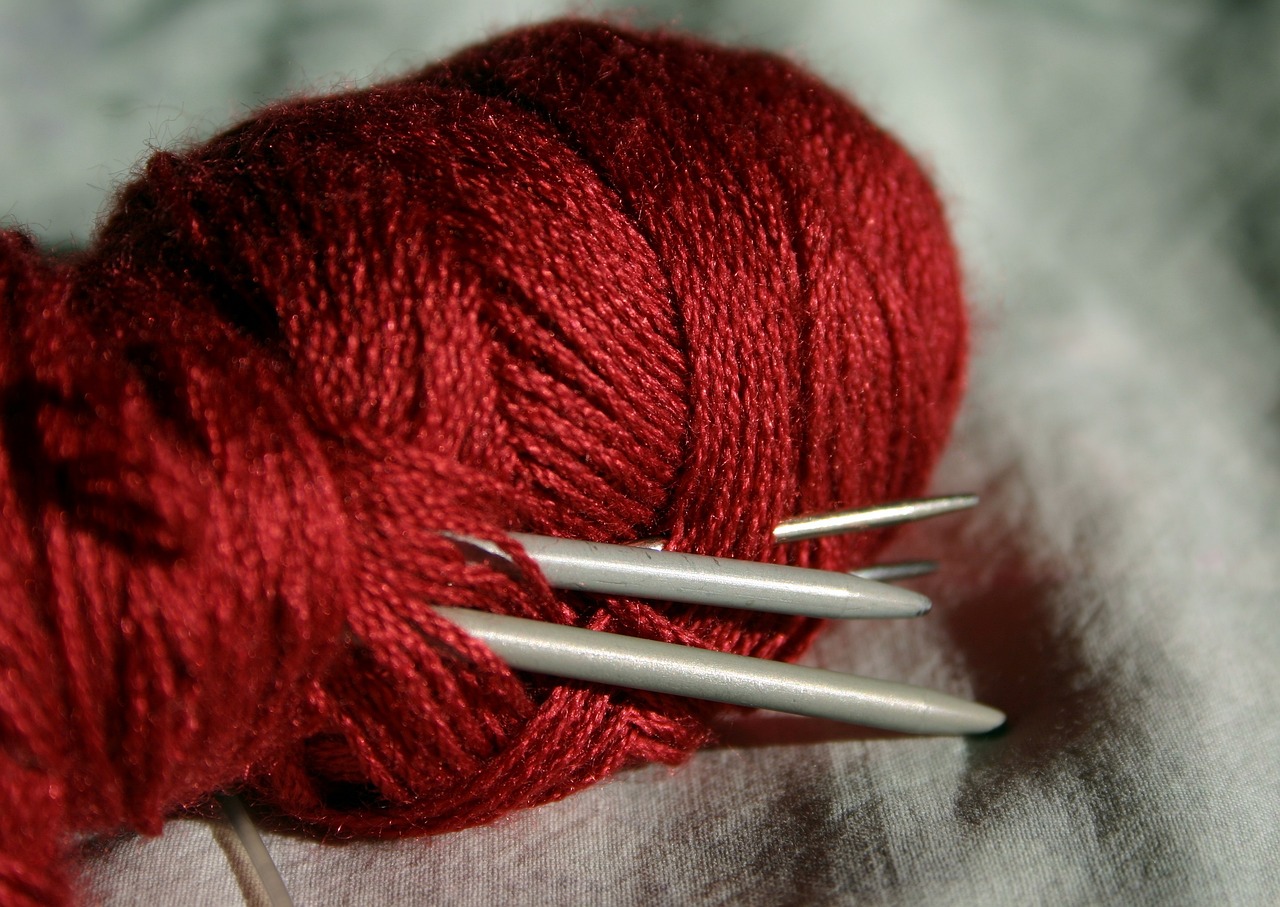
Basic Knitting Techniques
When diving into the world of knitting, mastering the basic techniques is like laying the foundation of a sturdy house. Without a solid base, even the most beautiful designs can crumble. So, let’s unravel the secrets of knitting together! First, you’ll want to get familiar with the most fundamental stitches that will serve as your toolkit throughout your knitting journey. These stitches are the building blocks of your projects, transforming simple yarn into cozy creations.
One of the first techniques you’ll encounter is the cast on, which is essentially how you start your knitting. Imagine it as the gateway to your project. There are several methods to cast on, each with its unique flair. For instance, the long-tail cast on is popular for its stretchiness and ease, making it perfect for beginners. On the other hand, the cable cast on offers a firmer edge, ideal for projects that require stability. Choosing the right method can significantly impact the look and feel of your finished piece.
Once you’ve cast on your stitches, the next step is to learn how to bind off. This technique is crucial for finishing your project neatly, ensuring that all your hard work doesn’t unravel. Binding off is like closing a book after reading; it’s the final touch that brings everything together. The simplest method is the standard bind off, where you knit two stitches and then pull the first stitch over the second. However, if you’re looking to add a decorative edge, you might try the picot bind off, which creates a lovely, lacy finish.
Exploring various cast-on methods can be a fun experiment. Here’s a quick rundown of some popular techniques:
- Long-Tail Cast On: Great for elasticity and commonly used.
- Cable Cast On: Perfect for a firm edge; ideal for ribbing.
- Knitted Cast On: Simple and quick, it’s perfect for beginners.
Each of these methods has its charm and can be chosen based on the specific requirements of your project. Experimenting with these will not only enhance your skill set but also add variety to your knitting repertoire.
Just as important as how you start your project is how you finish it. The way you bind off can affect the drape and overall appearance of your piece. Here are a few techniques to consider:
- Standard Bind Off: The go-to method for most projects.
- Jeny’s Surprisingly Stretchy Bind Off: Ideal for projects needing extra stretch.
- Picot Bind Off: Adds a decorative touch to the edge.
By understanding these binding off techniques, you can ensure that your finished pieces not only look polished but also maintain their shape and integrity over time.
Once you’ve got the basics down, the next step is to explore stitch patterns that can add texture and personality to your projects. From the classic garter stitch to the intricate cables, each pattern tells a story. For instance, the seed stitch creates a lovely bumpy texture that can make any blanket feel inviting. On the other hand, the rib stitch adds stretch and is excellent for garments like hats and sweaters. The possibilities are endless, and as you experiment, you’ll find your unique style shining through.
In conclusion, mastering these basic knitting techniques is essential for anyone looking to create beautiful and cozy home decor items. With practice and patience, you’ll find that knitting becomes not just a hobby but a delightful way to express your creativity. So grab your needles, choose your yarn, and let’s get knitting!
Q: What type of yarn is best for beginners?
A: For beginners, it’s best to choose a medium-weight yarn, like worsted weight, in a light color. This makes it easier to see your stitches.
Q: How long does it take to learn knitting?
A: Everyone learns at their own pace, but with a little practice, you can start making simple projects within a few weeks!
Q: Can I knit without a pattern?
A: Absolutely! Many knitters enjoy freestyle knitting, allowing their creativity to flow without the constraints of a pattern.

Cast On and Bind Off
When it comes to knitting, casting on and binding off are two fundamental techniques that every knitter must master. Think of casting on as the gateway to your knitting journey; it’s the first step that allows you to start creating beautiful pieces. Conversely, binding off is like the grand finale of a show, giving your project a polished finish. Both techniques are essential, and once you get the hang of them, you'll find that they open up a world of possibilities for your knitting projects.
To cast on stitches, you essentially create the initial row of loops on your needle. There are several methods to do this, but two of the most popular are the long-tail cast-on and the cable cast-on. The long-tail cast-on is favored for its elasticity and ease, making it perfect for most projects. Imagine it as laying the foundation of a house; if it’s solid, everything built on top will stand strong. On the other hand, the cable cast-on is a bit more advanced but provides a tighter edge, ideal for projects that require a more structured finish.
Once you've completed your knitting, it's time to bind off. This technique secures your stitches so they won’t unravel. It’s like tying a bow on a present; it keeps everything neatly in place. There are various binding off techniques, each offering a unique finish. For example, the basic bind-off is straightforward and works well for most projects, while a stretchy bind-off is perfect for items that need a bit of give, like hats or cuffs. You can even add decorative elements to your bind-off to enhance the overall look of your piece.
Here’s a quick comparison of some popular cast-on and bind-off methods:
| Technique | Description | Best Used For |
|---|---|---|
| Long-Tail Cast-On | Creates a flexible edge with a simple method. | Most projects, especially those needing elasticity. |
| Cable Cast-On | Creates a tighter edge, ideal for structured pieces. | Projects requiring a firm finish. |
| Basic Bind-Off | Simplest method to secure your stitches. | General use for most knitting projects. |
| Stretchy Bind-Off | Allows for a flexible finish, great for edges. | Hats, cuffs, and items needing stretch. |
In summary, mastering the cast-on and bind-off techniques is crucial for any knitter. They not only allow you to start and finish your projects neatly but also enhance the overall quality of your work. So, grab your needles and yarn, and start practicing these essential skills. You’ll be amazed at how they transform your knitting experience!
Q: What is the easiest cast-on method for beginners?
A: The long-tail cast-on is often recommended for beginners due to its simplicity and flexibility.
Q: Can I use any bind-off method for all types of projects?
A: While you can use basic bind-off for most projects, it’s best to choose a method that suits the specific needs of your item, such as stretchy bind-off for garments that require flexibility.
Q: How can I practice these techniques?
A: The best way to practice is by starting with small swatches. Try casting on and binding off several times until you feel comfortable with the movements.
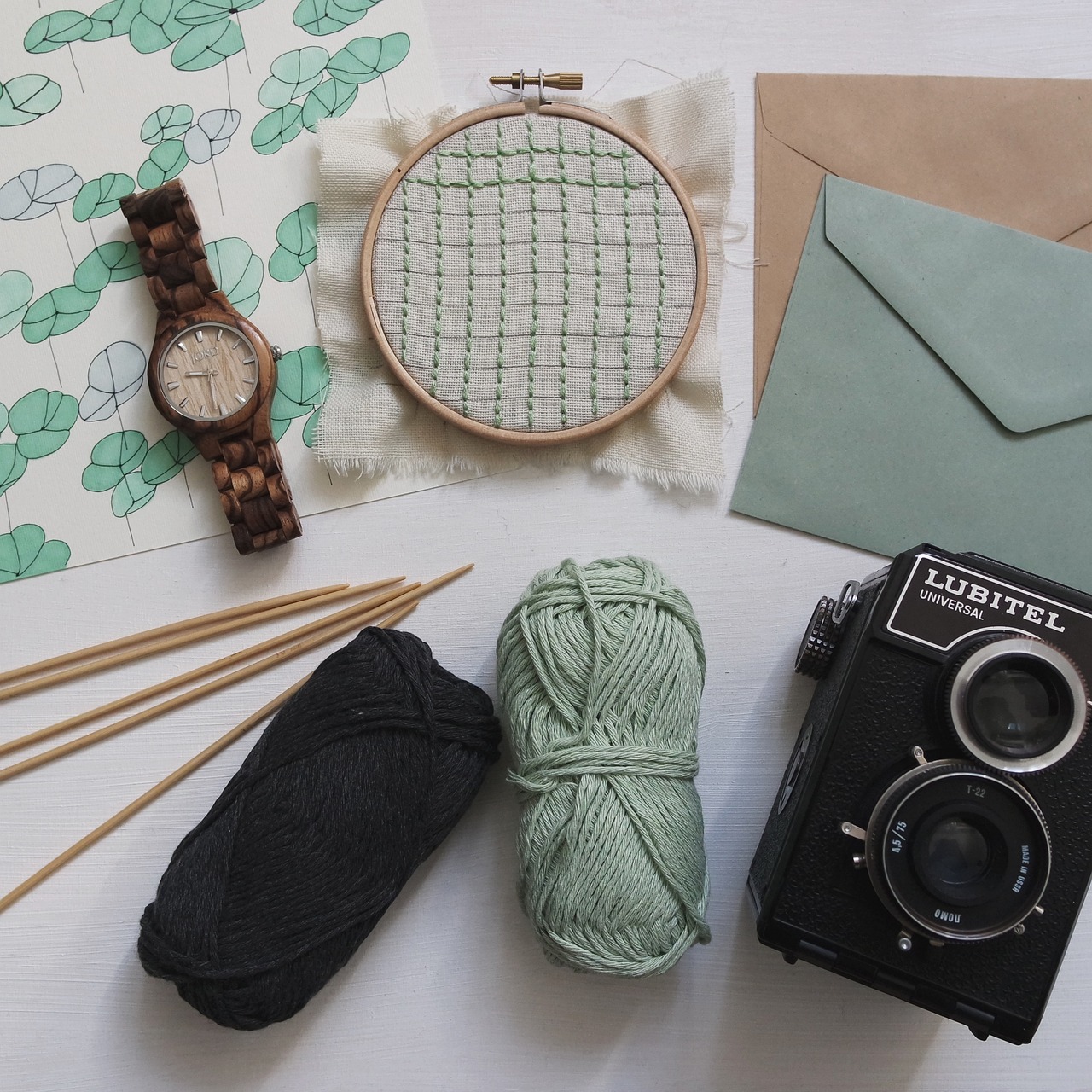
Different Cast-On Methods
When it comes to starting your knitting projects, the cast-on method you choose can significantly impact your finished piece. Think of it as the foundation of a house; if the base is strong and well-constructed, the rest of the structure will stand tall and proud. There are numerous cast-on techniques, each with its own unique characteristics and advantages. Let's dive into some of the most popular methods that you can experiment with!
One of the most commonly used methods is the Long-Tail Cast-On. This technique is favored for its flexibility and ease, making it suitable for a variety of projects. To execute this method, you need to estimate the length of yarn required for your stitches, which can be a bit tricky at first. However, once you get the hang of it, you'll appreciate how quickly you can get started on your knitting adventure!
Another fantastic method is the Cable Cast-On. This technique is particularly useful when you need to add stitches in the middle of a project or want a more decorative edge. The cable cast-on creates a firmer and more structured edge, which is perfect for projects that require a bit more stability. It’s like giving your knitting a solid handshake before you dive into the main event!
For those who enjoy a bit of flair, the Knitted Cast-On is a delightful option. This method involves using the knitting needle to create stitches directly onto the needle, resulting in a very stretchy edge. It’s perfect for projects that require a lot of give, such as socks or hats. Just imagine how cozy and snug your finished items will feel!
Here’s a quick comparison of the methods mentioned:
| Cast-On Method | Best For | Characteristics |
|---|---|---|
| Long-Tail Cast-On | General projects | Flexible, quick to learn |
| Cable Cast-On | Adding stitches mid-project | Structured, decorative edge |
| Knitted Cast-On | Stretchy items (socks, hats) | Very stretchy, easy to do |
Experimenting with these cast-on methods can be a fun way to add your personal touch to your knitting projects. Each technique has its own charm and can enhance the overall look and feel of your creations. So, grab your yarn and needles, and let’s get casting on!
- What is the easiest cast-on method for beginners? The Long-Tail Cast-On is often recommended for beginners due to its simplicity and versatility.
- Can I use different cast-on methods for the same project? Absolutely! You can mix and match cast-on methods depending on the section of your project and the look you want to achieve.
- How do I know how much yarn to use for the Long-Tail Cast-On? A good rule of thumb is to use about 3 times the width of your project in yarn length for the tail.
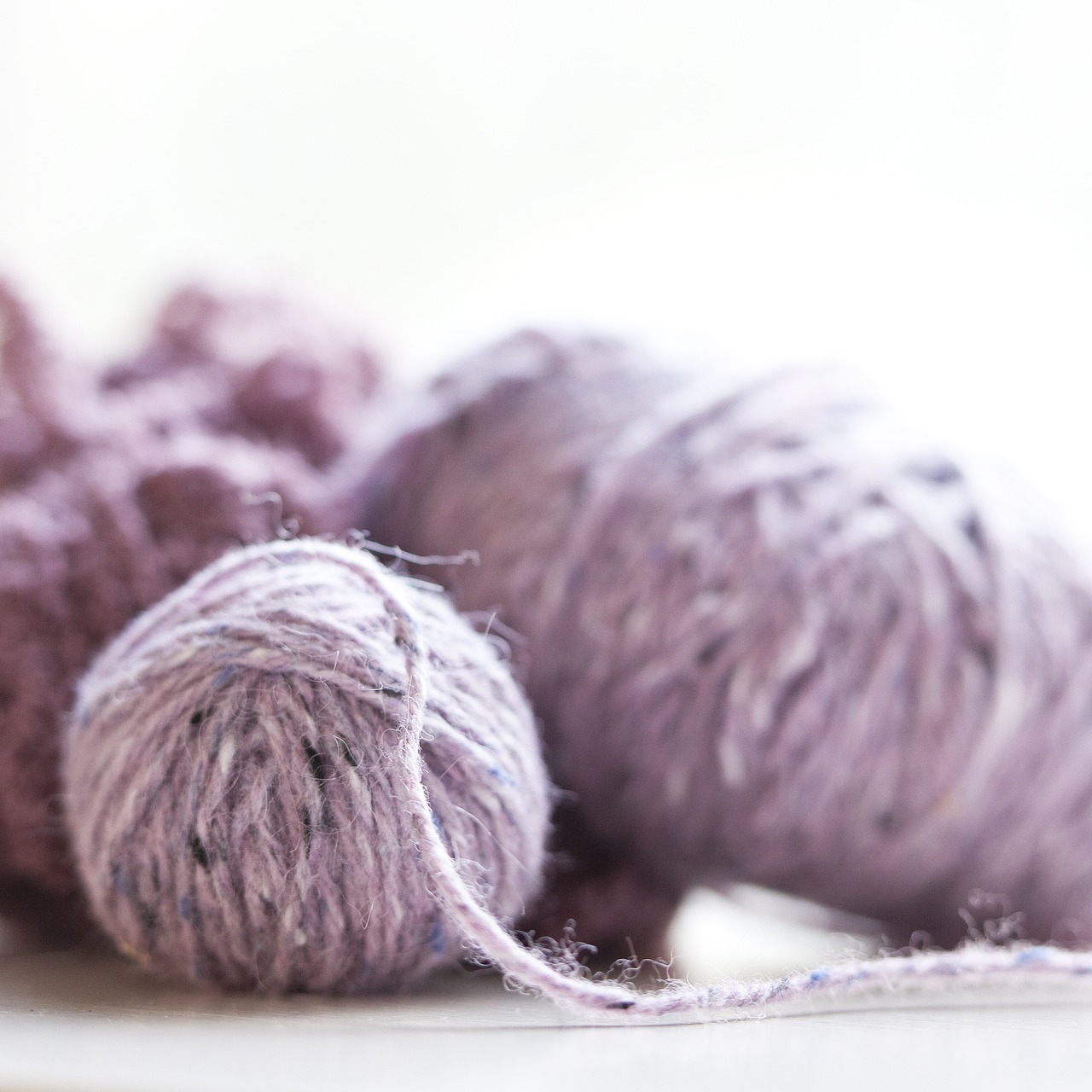
Binding Off Techniques
When you've poured your heart and soul into a knitting project, the last thing you want is a sloppy finish. Binding off is your grand finale, the moment you wrap up all your hard work into a neat package. This technique not only secures your stitches but also sets the tone for your finished piece. Think of it as the cherry on top of your knitting sundae! There are several methods to bind off, each with its own flair, and choosing the right one can make all the difference in the look and feel of your project.
One of the most popular methods is the basic bind-off. It's straightforward and works well for most projects. To perform this technique, you'll start by knitting two stitches. Then, use your left needle to lift the first stitch over the second and off the needle. Repeat this process until you reach the end of your row. This method creates a clean edge but can sometimes be a bit tight, so keep that in mind if you're working with thicker yarn.
For those looking to add a decorative touch, the stretchy bind-off is a fantastic option. This technique is especially useful for projects like hats or socks, where you need a bit of give. To execute this method, knit two stitches, then yarn over before pulling the first stitch over the second. This creates a more elastic edge that can accommodate movement without compromising the integrity of your work.
Another great technique is the picot bind-off, which adds a lovely decorative flair to your finished piece. To achieve this, knit two stitches, then bind off one stitch, followed by a yarn over. Repeat this process to create a charming, scalloped edge that’s perfect for shawls or decorative blankets. This method not only looks beautiful but also gives your project a unique personality.
Here’s a quick comparison of some popular binding off techniques:
| Technique | Description | Best For |
|---|---|---|
| Basic Bind-Off | Simple and clean finish. | Most projects. |
| Stretchy Bind-Off | Provides elasticity for movement. | Hats, socks, and garments. |
| Picot Bind-Off | Decorative and scalloped finish. | Shawls, blankets, and decorative items. |
In conclusion, mastering different binding off techniques not only enhances the quality of your finished projects but also allows you to express your creativity. Whether you prefer a classic finish or a more ornate edge, there’s a method out there that’s perfect for your needs. So, don’t rush through this last step! Take your time to find the technique that feels right for you, and enjoy the satisfaction of completing your beautiful knitted creations.
Q: How do I know which binding off technique to use?
A: It often depends on the type of project. For items that need a bit of stretch, like socks or hats, go for a stretchy bind-off. For decorative pieces, consider a picot bind-off.
Q: Can I bind off in the middle of a project?
A: Yes, but it’s usually best to bind off at the end of a row to maintain a clean edge. If you need to bind off in the middle, just be sure to secure your stitches well.
Q: Will binding off affect the size of my finished piece?
A: Yes, some techniques can create a tighter or looser edge, which may affect the overall size. Always test a few methods on a swatch to see how they behave with your yarn.
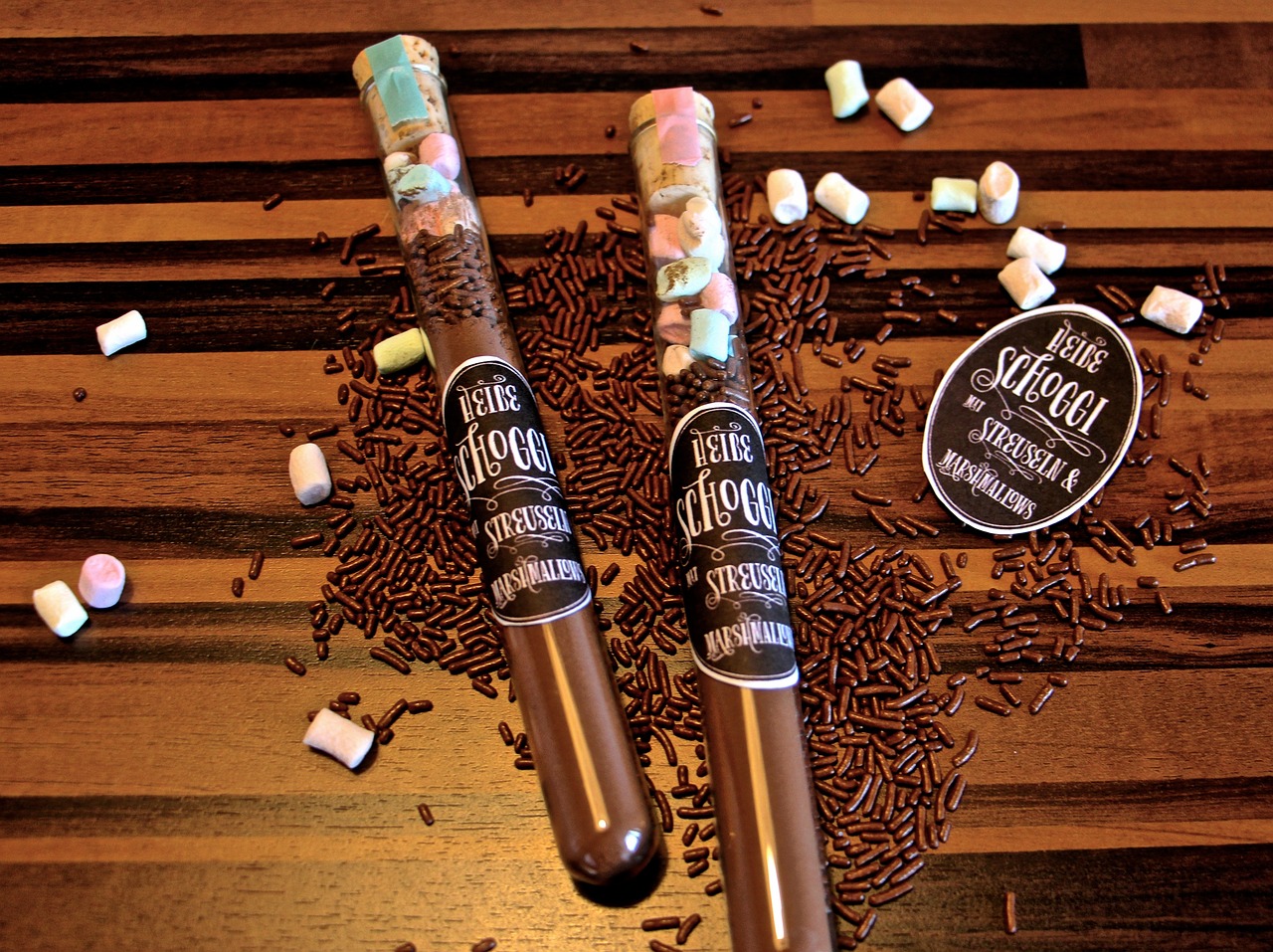
Common Stitch Patterns
When it comes to knitting, the beauty lies not just in the finished product but also in the intricate patterns that can be created with just a few simple stitches. Understanding common stitch patterns is essential for any knitter, as they can add depth, texture, and visual interest to your projects. Whether you're a beginner or a seasoned pro, knowing these patterns can elevate your knitting game to a whole new level. So, let’s dive into some of the most popular stitch patterns that will surely inspire your next cozy home decor project!
One of the most fundamental stitch patterns is the Garter Stitch. This pattern is created by knitting every row, resulting in a fabric that is elastic and squishy—perfect for blankets and scarves. The simplicity of the garter stitch makes it an excellent choice for beginners, while its versatility allows experienced knitters to use it in more complex designs.
Next up is the Stockinette Stitch, which is achieved by alternating between knitting one row and purling the next. This creates a smooth side (the knit side) and a bumpy side (the purl side), giving your project a polished look. The stockinette stitch is popular for sweaters and other garments because it drapes beautifully and showcases color changes and patterns effectively.
For those looking to add a bit of flair, the Seed Stitch is a fantastic option. This pattern is made by alternating knit and purl stitches in a staggered fashion, creating a bumpy texture that is visually appealing and tactile. Seed stitch is great for adding interest to borders or as a main pattern in scarves and hats.
Another delightful pattern is the Cable Stitch. It involves crossing groups of stitches over each other to create a twisted effect that resembles a cable. Cables can range from simple to complex, and they add a stunning three-dimensional quality to your knitting. They are perfect for cozy sweaters and accessories that need a bit of character.
Lastly, let’s talk about the Lace Stitch. Lace knitting introduces open spaces into your fabric, creating delicate and airy designs. This pattern can be as simple as yarn overs and knit two togethers or as intricate as full lace panels. Lace stitches are ideal for shawls, wraps, and decorative throws, adding a touch of elegance to your home decor.
To summarize, here’s a quick reference table of these common stitch patterns:
| Stitch Pattern | Description | Best For |
|---|---|---|
| Garter Stitch | Knitting every row for a squishy texture. | Blankets, scarves |
| Stockinette Stitch | Alternating knit and purl rows for a smooth fabric. | Sweaters, garments |
| Seed Stitch | Alternating knit and purl stitches for a bumpy texture. | Borders, scarves, hats |
| Cable Stitch | Crossing stitches to create a twisted effect. | Sweaters, accessories |
| Lace Stitch | Creating open spaces for delicate designs. | Shawls, wraps, throws |
By mastering these common stitch patterns, you'll be well on your way to creating beautiful, textured pieces that not only enhance your home but also showcase your unique style. So grab your needles, pick a pattern, and let your creativity flow!
Q: What is the easiest stitch pattern for beginners?
A: The Garter Stitch is typically the easiest for beginners, as it involves knitting every row and is very forgiving.
Q: Can I combine different stitch patterns in one project?
A: Absolutely! Combining different stitch patterns can create unique textures and designs in your projects. Just make sure to consider how the patterns will work together.
Q: How do I choose the right yarn for a stitch pattern?
A: The yarn weight and fiber content can significantly affect how a stitch pattern looks. Lighter yarns work well for lace stitches, while thicker yarns are great for cables and garter stitches.
Q: Where can I find more stitch patterns?
A: There are plenty of resources available online, including knitting blogs, YouTube tutorials, and knitting books that offer a plethora of stitch patterns to explore.
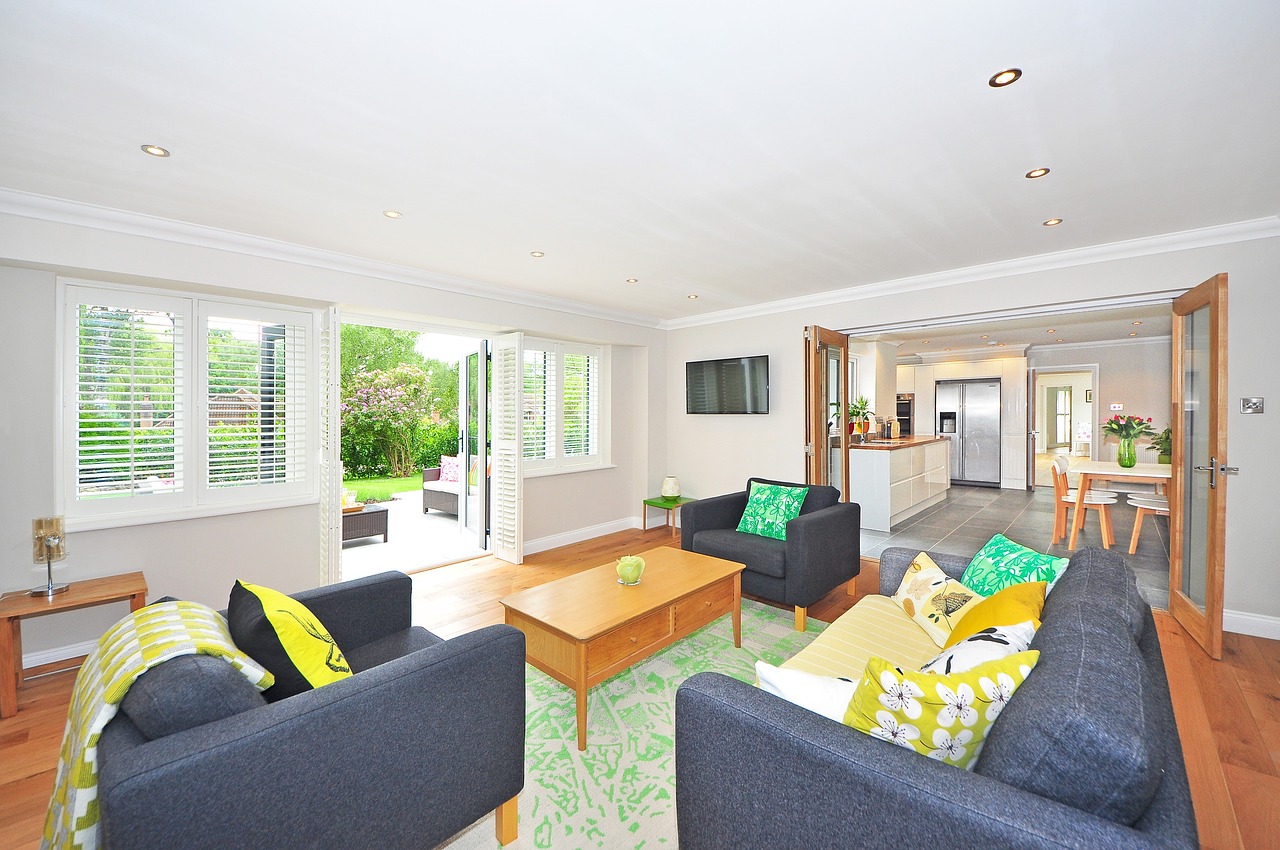
Creating Cozy Home Accessories
Transforming your living space into a cozy haven is not just about the furniture or the paint on the walls; it’s about the little touches that make a house feel like a home. And what better way to add those personal touches than through handmade knitted accessories? Knitting allows you to create beautiful items that not only enhance your decor but also provide warmth and comfort. Imagine curling up on a chilly evening with a soft, knitted blanket draped over your couch or resting your head on a plush, decorative pillow that you made yourself. Sounds delightful, right?
When it comes to creating cozy home accessories, the possibilities are endless! You can knit everything from blankets and throws to pillows and even wall hangings. Each item you create adds a unique flair to your space while serving a practical purpose. For instance, a knitted blanket can serve as a statement piece on your sofa, while also keeping you warm and snug during those cold winter nights. Similarly, decorative pillows can bring a pop of color and texture to your living room, making it feel more inviting.
Let’s dive into a couple of popular projects that can elevate your home decor:
Creating a knitted blanket is like wrapping your home in a warm hug. The best part? You can customize it to fit your style! Start by selecting your favorite yarn—think about the colors that resonate with your decor. You might want to go for earthy tones for a rustic vibe or vibrant hues for a more modern look. The choice of yarn can completely change the feel of your blanket.
When it comes to patterns, you have a variety of options. A simple garter stitch can create a lovely, textured look, while a cable knit can add a touch of sophistication. If you’re feeling adventurous, you might even try a patchwork design, combining different stitch patterns or colors. Here’s a quick tip: always check the gauge before starting your blanket to ensure it turns out just the right size!
Next up are decorative pillows! These little gems can make a huge difference in your living space. Not only do they provide comfort, but they also act as great accent pieces. You can knit pillows in various shapes and sizes—square, rectangular, or even round. Plus, they’re a fantastic way to use up leftover yarn!
To create a knitted pillow, start by choosing a pattern that excites you. You might opt for a simple stockinette stitch for a sleek look or try a textured pattern like seed stitch for added visual interest. Once you’ve knitted the front and back pieces, simply sew them together, stuff them with your choice of filling, and voilà—you’ve got a cozy pillow that’s perfect for snuggling or decorating!
Incorporating these knitted accessories into your home decor not only showcases your creativity but also provides a sense of warmth and comfort. So, grab your needles and yarn, and let your imagination run wild! Whether it’s a soft blanket or a stylish pillow, your handmade creations will undoubtedly make your home feel even cozier.
Q: What type of yarn is best for knitting home accessories?
A: It depends on the project! For blankets, consider using bulky or super bulky yarn for warmth and quick knitting. For pillows, a medium-weight yarn works well, giving you a balance of softness and structure.
Q: How do I care for my knitted items?
A: Most knitted items can be gently washed by hand in cold water and laid flat to dry. Always check the yarn label for specific care instructions to keep your creations looking their best.
Q: Can I mix different yarn textures in one project?
A: Absolutely! Mixing textures can create a unique and interesting look. Just be mindful of the weight of the yarns you’re using to ensure a cohesive finished product.

Knitted Blankets
Knitted blankets are the epitome of warmth and comfort, transforming any space into a cozy haven. Imagine snuggling up on a chilly evening, wrapped in a soft, handmade blanket that you created with your own hands. Not only do these blankets provide physical warmth, but they also add a personal touch to your home decor, making it uniquely yours. Whether you're a seasoned knitter or just starting out, creating a knitted blanket can be a fulfilling project that enhances the aesthetic of your living space.
When it comes to selecting yarn for your blanket, the choices can be overwhelming. You want a yarn that is not only soft and warm but also durable enough to withstand the test of time. Consider the following types of yarn:
- Acrylic: Affordable and easy to care for, acrylic yarn is perfect for beginners and offers a wide range of colors.
- Wool: Known for its warmth, wool is a classic choice that can be a bit pricier but is well worth the investment.
- Cotton: Great for lighter, breathable blankets, cotton yarn is perfect for warmer climates or summer evenings.
Once you've chosen your yarn, it's time to pick a pattern. The pattern you select will greatly influence the overall look and feel of your blanket. Here are a few popular patterns to consider:
- Garter Stitch: This is the simplest stitch, perfect for beginners. It creates a squishy texture that feels amazing.
- Seed Stitch: A bit more advanced, seed stitch alternates knit and purl stitches to create a lovely bumpy texture.
- Cable Knit: If you're feeling adventurous, cable knitting can add stunning visual interest and depth to your blanket.
As you embark on your knitting journey, remember that the size of your blanket is also an important consideration. A standard throw blanket usually measures around 50x60 inches, but you can customize it to your liking. Just keep in mind that larger blankets will require more yarn and time to complete. To help you visualize your project, here’s a simple table outlining common blanket sizes:
| Blanket Type | Dimensions (inches) |
|---|---|
| Baby Blanket | 30 x 36 |
| Throw Blanket | 50 x 60 |
| Lap Blanket | 36 x 48 |
| Full Size Blanket | 60 x 80 |
Knitting a blanket is not just about the end product; it’s also about the journey. Each stitch you make is a reflection of your creativity and patience. So, grab your needles, choose your favorite yarn, and let the magic of knitting transform your living space into a cozy retreat. And remember, every time you wrap yourself in your knitted blanket, you’ll feel the love and dedication that went into creating it.
1. How long does it take to knit a blanket?
The time it takes to knit a blanket can vary greatly depending on the size of the blanket, the complexity of the pattern, and your knitting speed. A simple throw blanket might take a few weeks, while larger or more intricate designs could take several months.
2. What is the best yarn for a knitted blanket?
The best yarn for a knitted blanket largely depends on personal preference. Acrylic yarn is great for beginners due to its affordability, while wool offers warmth and durability. Cotton is ideal for lighter, breathable blankets.
3. Can I knit a blanket without a pattern?
Absolutely! Many knitters enjoy the freedom of creating their own designs. Just start with a simple stitch and let your creativity guide you.

Decorative Pillows
Decorative pillows are not just about comfort; they are the cherry on top of your home decor! Imagine walking into a room and being greeted by a splash of color and texture that instantly makes you feel at home. Knitting your own decorative pillows allows you to express your personal style while adding a cozy vibe to your living space. Plus, it’s a fantastic way to use up those leftover yarn scraps you have lying around!
When it comes to creating knitted pillows, the possibilities are endless. You can choose from a variety of shapes, sizes, and stitch patterns to design a unique piece that complements your existing decor. For instance, a chunky knit pillow can add a rustic feel, while a cable knit design can bring a touch of elegance and sophistication. The key is to select a pattern that resonates with your style and the overall aesthetic of your home.
Before diving into your project, consider the following tips to ensure your decorative pillows turn out beautifully:
- Choose the Right Yarn: The yarn you select will significantly impact the look and feel of your pillow. Opt for soft, durable yarns that can withstand wear and tear, especially if they will be used frequently.
- Pick the Perfect Filling: For a plush feel, consider using polyester fiberfill or down feathers. These materials provide comfort while maintaining the pillow's shape.
- Experiment with Colors: Don’t be afraid to play with colors! Use contrasting shades or patterns to create a striking visual effect that draws attention.
Now, let’s talk about some popular patterns you might want to try. The simple garter stitch is perfect for beginners and creates a lovely textured look. If you’re feeling adventurous, the fair isle technique allows you to incorporate multiple colors and designs into one pillow, making it a stunning centerpiece for your sofa.
Once you’ve chosen your pattern and materials, the construction process is fairly straightforward. Start by casting on the desired number of stitches based on your pillow size, then knit until you reach the desired length. Don’t forget to bind off securely to prevent any unraveling! After knitting the front and back pieces, it’s time to sew them together, leaving a small opening for the filling. Once stuffed, sew the opening shut, and voilà! You have a beautiful, handmade decorative pillow that adds warmth and character to your home.
Knitting decorative pillows not only enhances your living space but also provides a satisfying creative outlet. There’s something incredibly rewarding about seeing your handiwork come to life in your home. So grab your needles, pick out some yarn, and let your imagination run wild!
Q: How do I choose the right yarn for my decorative pillows?
A: Look for soft, durable yarns that will hold up over time. Consider the texture and color that will best match your decor.
Q: What are some beginner-friendly patterns for knitted pillows?
A: Simple garter stitch or stockinette stitch patterns are great for beginners. You can also try ribbing for added texture.
Q: How do I wash my knitted pillows?
A: Always check the yarn label for washing instructions. Most knitted items can be hand-washed in cold water and laid flat to dry.
Q: Can I mix different yarns in a single pillow?
A: Yes! Mixing yarns can create unique textures and colors. Just ensure that the yarns have similar washing instructions.
Frequently Asked Questions
- What are the essential supplies I need for DIY knitting?
To get started with DIY knitting, you'll need a few essential supplies. These include knitting needles, yarn, scissors, and a tape measure. Depending on your project, you might also want to have stitch markers, a yarn needle for weaving in ends, and a pattern guide. Think of these supplies as your toolbox, ready to create cozy masterpieces!
- Can beginners learn knitting techniques easily?
Absolutely! Knitting is a craft that welcomes beginners with open arms. Start with basic stitches like the knit and purl, and gradually explore more complex techniques. There are plenty of online tutorials and resources available to guide you. Just remember, practice makes perfect, and before you know it, you’ll be creating beautiful items!
- What types of yarn are best for home decor projects?
When selecting yarn for home decor, consider the texture and durability. Acrylic yarn is a great budget-friendly option that’s easy to care for, while cotton yarn offers a breathable feel, perfect for items like pillows. For a touch of luxury, wool or alpaca yarn can add warmth and coziness to your creations. Choose the one that fits your project and personal style!
- How do I choose the right pattern for my knitting project?
Choosing the right pattern is all about your skill level and the look you want to achieve. For beginners, start with simple patterns that focus on basic stitches. As you gain confidence, you can tackle more intricate designs. Don’t hesitate to experiment; sometimes the best creations come from trying something new!
- What are some popular stitch patterns for home accessories?
There are several popular stitch patterns that can add flair to your home accessories. The garter stitch is great for beginners, while the rib stitch offers elasticity, perfect for cozy blankets. The seed stitch adds texture and visual interest, making your projects stand out. Explore different patterns to find what resonates with your style!
- How can I maintain my knitted items?
To keep your knitted items looking their best, follow a few simple care tips. Always check the yarn label for washing instructions, as some yarns may require gentle hand washing while others are machine washable. Avoid hanging knitted items to dry; instead, lay them flat to maintain their shape. With a little care, your cozy creations will last for years!



















